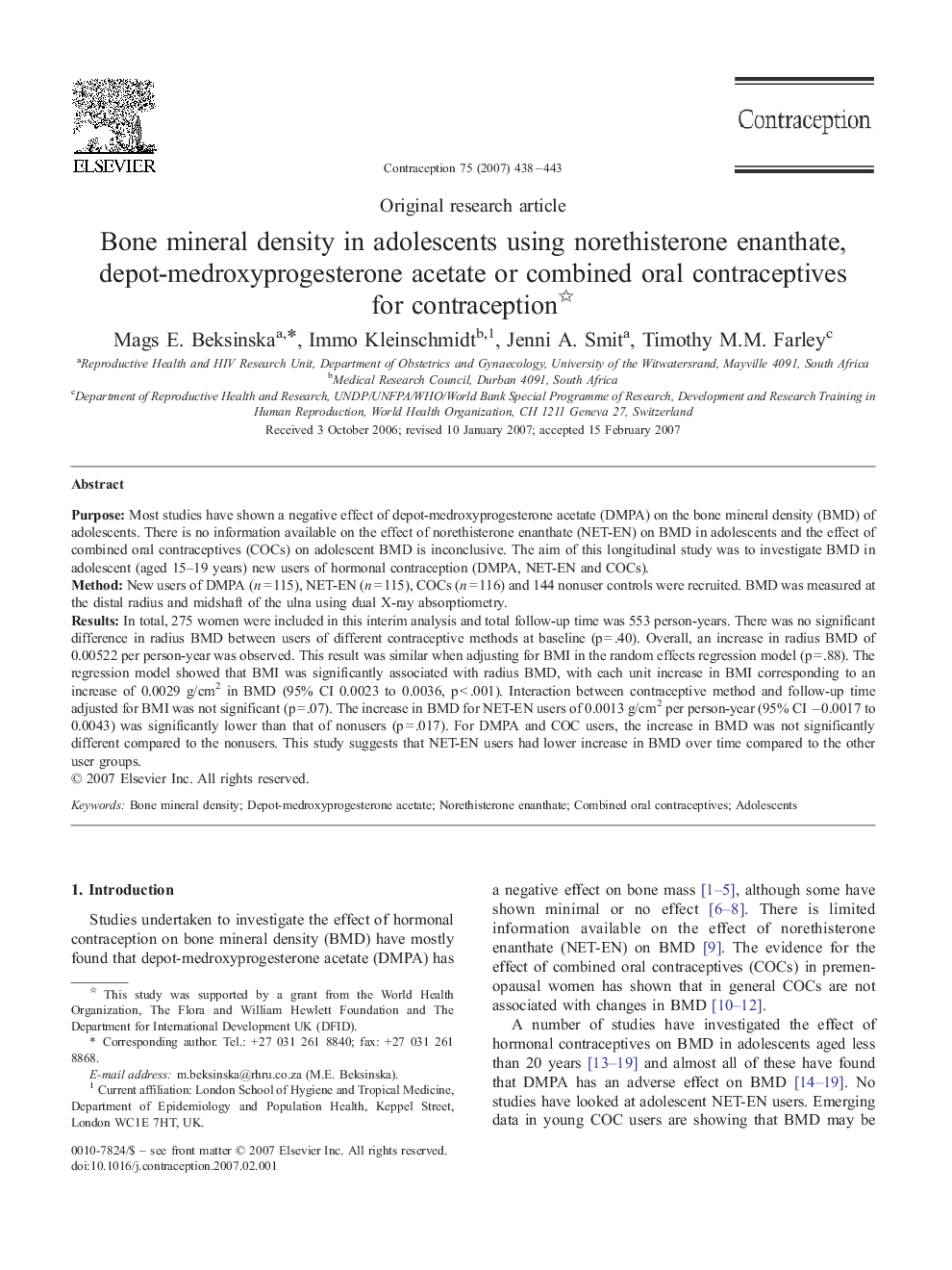| Article ID | Journal | Published Year | Pages | File Type |
|---|---|---|---|---|
| 3915656 | Contraception | 2007 | 6 Pages |
PurposeMost studies have shown a negative effect of depot-medroxyprogesterone acetate (DMPA) on the bone mineral density (BMD) of adolescents. There is no information available on the effect of norethisterone enanthate (NET-EN) on BMD in adolescents and the effect of combined oral contraceptives (COCs) on adolescent BMD is inconclusive. The aim of this longitudinal study was to investigate BMD in adolescent (aged 15–19 years) new users of hormonal contraception (DMPA, NET-EN and COCs).MethodNew users of DMPA (n=115), NET-EN (n=115), COCs (n=116) and 144 nonuser controls were recruited. BMD was measured at the distal radius and midshaft of the ulna using dual X-ray absorptiometry.ResultsIn total, 275 women were included in this interim analysis and total follow-up time was 553 person-years. There was no significant difference in radius BMD between users of different contraceptive methods at baseline (p=.40). Overall, an increase in radius BMD of 0.00522 per person-year was observed. This result was similar when adjusting for BMI in the random effects regression model (p=.88). The regression model showed that BMI was significantly associated with radius BMD, with each unit increase in BMI corresponding to an increase of 0.0029 g/cm2 in BMD (95% CI 0.0023 to 0.0036, p<.001). Interaction between contraceptive method and follow-up time adjusted for BMI was not significant (p=.07). The increase in BMD for NET-EN users of 0.0013 g/cm2 per person-year (95% CI −0.0017 to 0.0043) was significantly lower than that of nonusers (p=.017). For DMPA and COC users, the increase in BMD was not significantly different compared to the nonusers. This study suggests that NET-EN users had lower increase in BMD over time compared to the other user groups.
